Antonio Joaquin
Mr. Tony, I found your uncle Nick's parting poem to your father,
Porfirio "Ping" Joaquin. It was printed in his 1987 book, Collected
Verse. Apologies but I placed [italicized] after words or phrases that
were italicized in the original as Facebook doesn't have an italics
feature, and the poem might be read differently if they weren't so.
Bye Bye Jazzbird
1
A death in the family. Relatives
you haven't seen since the last
death in the family reappear
like furniture from your past
reassembled for a movie about it;
reassembling now only as props:
tools of custom, vessels of ceremony,
footlights (as it were) and backdrops,
to celebrate not a death but the family
here having one of its final stops,
here it continues where it stops.
2
No one here as a person,
only as the correct representative
of his branch of the line. Only
the man that's dead is here as himself,
is discussed as such. "Rather lonely,
his last days." "Well, he was on the shelf
all of these years." "He was renting
that crummy apartment?" "No, just a part
of it, the upstairs." "Collapsed, alone
with his cats―whom someone should be representing.
They were so dear to him." "From the start
of the stroke, unconscious." "Four o'clock dawn."
"Died like his father, cerebral hemorrhage."
The crowded wake has a lively tone.
3
From the unfamiliar old man
in the coffin, from the scant-haired head
and ill-fitting dentures, memory slides
back to the golden boy who began
with curls on his brow and a rash of red
birthmarks on his body. "Suerte! Suerte!"
soothsayers intoned. So fair and, besides,
so talented. A prince of a youth!
Colegial del Ateneo. At fifteen,
pianist and stowaway. And in truth
the piano was what he rode to America:
it was his magic carpet, his flying
horse. A good delinquent, he.
Mad about music, high on jazz
and ragtime, all that razzmatazz
when sheik and flapper were just dying
to foxtrot under the bamboo tree.
4
Shift the scene to Manila
late in the 1920s. Vaudeville
tops show-biz. It's cash with class.
On Plaza Goiti is the Savoy
with its Nifties. Plaza Santa Cruz
nightly shines with the rainbow hues
of the Rivoli Theater, which has
the Varieties. And our princely boy
stars there now as King of Jazz
leading the band. He stabs the keys
as leggy high-kiking Nena Warsaw
knocks her knees against her torso.
His piano groans as the sailors howl.
Hot has Maggie Calloway got 'em
while she shimmies her Black Bottom.
Grace Darling steers him to a scowl
as he starts a tune right up her alley:
I wonder What's Become of Sally. [italicized]
Perches Miss Katy de la Cruz
(scatting away the St. Louis blues [italicized])
on his piano. A 1920
and comic tango for Vicente
Ocampo, he follows with a Hot Mama
number for the Alabama
Brothers
crackling mestizo bone
as they teach Miami the Charleston.
What blue notes for his favorite trouper:
star of the show, Miss Dimples Cooper.
And the Rivoli is jumping when,
syncopating, the King of Jazz
hauls up the ultimate razzmatazz:
Happy Days are Here Again! [italicized]
5
Not always happy days, though,
Not always hoopla and whoopee
and hey-hey in that long ago
of young jazz. Backstage bitchings. The droopy
and draggy rehearsals at one a.m.
Shows on the road with crook managers
fleeing with the funds. "We ate our phlegm."
How about that tour of Shanghai
and Harbin when the troupe ended up
stranded in darkest Siberia
and one of the girls went blind. . . .
"However, thank God, it's the good times
somehow that get left behind
in memory. Never mind
that we took awful chances."
The "we" being: Hanasan, Pritzie, Toytoy,
Carmencita Llópiz, Charito Sánchez,
the Morales Sisters, Adolfo López―
names from an era of joy
and a fun town simply swarming
with stands where he played "extra" and solo:
the Elks, the Tiro al Blanco, the Army
and Navy, the old Manila Polo
Club (where you had to be hoity-toity),
Legazpi Landing, Tom's at Goiti. . . .
Fields where the living was easy,
they kept his piano busy
and hot as a sorcerer's apprentice
back in the Roaring 1920s.
6
The living is rougher afterwards,
and the music. The old Savoy
is dead; the Rivoli gone
with vaudeville. He's on the run:
Surabaya. Hong Kong. Los Angeles.
South Africa. The Cine Palace
where an older Katy is dumped on callous
crowds. The elegance of the Nifties
and the Rivoli revues of the past
haunts him as he humors his last
audiences. In the 1950s
he's still onstage―at the Star, at the Clover,
where vaudeville makes a last stand.
And he's still at it, bent over
a keyboard, when burlesque is the grand
finale of the variety show.
End of the line for the rover.
The Gala Theater, so sweet and low,
is curtains for the old jazz hand.
Well, when you have to, you go.
7
No lack of mourners to point
it out: "What an end―the King
of Jazz playing a burlesque joint!"
Actually there's no sting
to the observation. Actually
moreover the Gala had had to be given up
and the last years spent in retirement
from show-biz, save for a monthly sing-
along with Rotary. That and the cats
he always was rushing home to feed
were the last rites. Once indeed
he played in public again―at the Bacus.
Said Lito Molina: "He's a jazz great,
I tell the young buffs and they ask
where are his records? He should be recorded."
By then it was too late,
though he tried to hone himself for this task;
rehearsed a few of the old hits hoarded
in memory. One day, at a family
reunion, he played to a tape recorder
while we cheered and applauded: "More! More!"
That was just a few months before,
having fed the cats, he suddenly
headed south of the border.
8
A death in the family. Last night
of the wake. It rains. A blue note
like the ones that made his piano right.
We step out for a glass of beer,
Totoy Sevilla, Beer Flores, Bentot.
It's towards midnight. No place near
still open except this little disco
upstairs, one block from the church.
Canned music. A-go-go girls in sheer
bikinis doing their lope and lurch
or shaking in shimmy flat
on the floor, while we talk of this and that
and nurse our beer. Totoy
Sevilla keeps his hat
on: he's quite bald. Beer Flores,
ordering, says we've come to enjoy
"chicken without feathers." The quote
amuses the waiter. We snigger in chorus.
He left the movies, says Bentot,
because they make you wait and wait
for your money, then they give you a rubber
check. We sing over beer. "I hate
to see that evenin' sun go down." [italicized]
Not a pop tune for today's nightclubber.
Then back to church, where we clown
it up, having started a family legend:
"They spent the wake getting drunk
at a strip joint." What our kids will remember
of us when in turn we flunk
out. That was a night in November.
9
Next day, after the funeral,
we gather at Ike's place.
Noodles and beer. The tape recording
is played. Abruptly the good old days
tinkle again. The young town
of the '20s, of Rivoli and Savoy,
throbs around us. We are boarding
a trolley car back to those hymns of joy:
Ain't She Sweet [italicized] and Black Susan Brown [italicized]
and How Come You Do Me
Like You Do Do Do. [italicized]
Et cetera. Cheers all the while.
But the last tune on the tape
is the sweetest of all, as new
today as when first given shape
and shiver. Life was a smile
when he wrote it (circa mid-1920s),
the first blues Philippine style.
And because it never went to market
it hasn't lost novelty,
is as fresh as when Maggie Calloway
first sang it on the Rivoli stage:
"I want, I want, I want
I want a little lovin'. . . ." [italicized]
A young man's air, too wistful to age.
We hear it now in astonishment,
in delight. We riot, we rage
and cry "Author! Author!"
Evermore with him
be show and footlights and orchestra
and good piano. He got rhythm.
Bye Bye Jazzbird
1
A death in the family. Relatives
you haven't seen since the last
death in the family reappear
like furniture from your past
reassembled for a movie about it;
reassembling now only as props:
tools of custom, vessels of ceremony,
footlights (as it were) and backdrops,
to celebrate not a death but the family
here having one of its final stops,
here it continues where it stops.
2
No one here as a person,
only as the correct representative
of his branch of the line. Only
the man that's dead is here as himself,
is discussed as such. "Rather lonely,
his last days." "Well, he was on the shelf
all of these years." "He was renting
that crummy apartment?" "No, just a part
of it, the upstairs." "Collapsed, alone
with his cats―whom someone should be representing.
They were so dear to him." "From the start
of the stroke, unconscious." "Four o'clock dawn."
"Died like his father, cerebral hemorrhage."
The crowded wake has a lively tone.
3
From the unfamiliar old man
in the coffin, from the scant-haired head
and ill-fitting dentures, memory slides
back to the golden boy who began
with curls on his brow and a rash of red
birthmarks on his body. "Suerte! Suerte!"
soothsayers intoned. So fair and, besides,
so talented. A prince of a youth!
Colegial del Ateneo. At fifteen,
pianist and stowaway. And in truth
the piano was what he rode to America:
it was his magic carpet, his flying
horse. A good delinquent, he.
Mad about music, high on jazz
and ragtime, all that razzmatazz
when sheik and flapper were just dying
to foxtrot under the bamboo tree.
4
Shift the scene to Manila
late in the 1920s. Vaudeville
tops show-biz. It's cash with class.
On Plaza Goiti is the Savoy
with its Nifties. Plaza Santa Cruz
nightly shines with the rainbow hues
of the Rivoli Theater, which has
the Varieties. And our princely boy
stars there now as King of Jazz
leading the band. He stabs the keys
as leggy high-kiking Nena Warsaw
knocks her knees against her torso.
His piano groans as the sailors howl.
Hot has Maggie Calloway got 'em
while she shimmies her Black Bottom.
Grace Darling steers him to a scowl
as he starts a tune right up her alley:
I wonder What's Become of Sally. [italicized]
Perches Miss Katy de la Cruz
(scatting away the St. Louis blues [italicized])
on his piano. A 1920
and comic tango for Vicente
Ocampo, he follows with a Hot Mama
number for the Alabama
Brothers
crackling mestizo bone
as they teach Miami the Charleston.
What blue notes for his favorite trouper:
star of the show, Miss Dimples Cooper.
And the Rivoli is jumping when,
syncopating, the King of Jazz
hauls up the ultimate razzmatazz:
Happy Days are Here Again! [italicized]
5
Not always happy days, though,
Not always hoopla and whoopee
and hey-hey in that long ago
of young jazz. Backstage bitchings. The droopy
and draggy rehearsals at one a.m.
Shows on the road with crook managers
fleeing with the funds. "We ate our phlegm."
How about that tour of Shanghai
and Harbin when the troupe ended up
stranded in darkest Siberia
and one of the girls went blind. . . .
"However, thank God, it's the good times
somehow that get left behind
in memory. Never mind
that we took awful chances."
The "we" being: Hanasan, Pritzie, Toytoy,
Carmencita Llópiz, Charito Sánchez,
the Morales Sisters, Adolfo López―
names from an era of joy
and a fun town simply swarming
with stands where he played "extra" and solo:
the Elks, the Tiro al Blanco, the Army
and Navy, the old Manila Polo
Club (where you had to be hoity-toity),
Legazpi Landing, Tom's at Goiti. . . .
Fields where the living was easy,
they kept his piano busy
and hot as a sorcerer's apprentice
back in the Roaring 1920s.
6
The living is rougher afterwards,
and the music. The old Savoy
is dead; the Rivoli gone
with vaudeville. He's on the run:
Surabaya. Hong Kong. Los Angeles.
South Africa. The Cine Palace
where an older Katy is dumped on callous
crowds. The elegance of the Nifties
and the Rivoli revues of the past
haunts him as he humors his last
audiences. In the 1950s
he's still onstage―at the Star, at the Clover,
where vaudeville makes a last stand.
And he's still at it, bent over
a keyboard, when burlesque is the grand
finale of the variety show.
End of the line for the rover.
The Gala Theater, so sweet and low,
is curtains for the old jazz hand.
Well, when you have to, you go.
7
No lack of mourners to point
it out: "What an end―the King
of Jazz playing a burlesque joint!"
Actually there's no sting
to the observation. Actually
moreover the Gala had had to be given up
and the last years spent in retirement
from show-biz, save for a monthly sing-
along with Rotary. That and the cats
he always was rushing home to feed
were the last rites. Once indeed
he played in public again―at the Bacus.
Said Lito Molina: "He's a jazz great,
I tell the young buffs and they ask
where are his records? He should be recorded."
By then it was too late,
though he tried to hone himself for this task;
rehearsed a few of the old hits hoarded
in memory. One day, at a family
reunion, he played to a tape recorder
while we cheered and applauded: "More! More!"
That was just a few months before,
having fed the cats, he suddenly
headed south of the border.
8
A death in the family. Last night
of the wake. It rains. A blue note
like the ones that made his piano right.
We step out for a glass of beer,
Totoy Sevilla, Beer Flores, Bentot.
It's towards midnight. No place near
still open except this little disco
upstairs, one block from the church.
Canned music. A-go-go girls in sheer
bikinis doing their lope and lurch
or shaking in shimmy flat
on the floor, while we talk of this and that
and nurse our beer. Totoy
Sevilla keeps his hat
on: he's quite bald. Beer Flores,
ordering, says we've come to enjoy
"chicken without feathers." The quote
amuses the waiter. We snigger in chorus.
He left the movies, says Bentot,
because they make you wait and wait
for your money, then they give you a rubber
check. We sing over beer. "I hate
to see that evenin' sun go down." [italicized]
Not a pop tune for today's nightclubber.
Then back to church, where we clown
it up, having started a family legend:
"They spent the wake getting drunk
at a strip joint." What our kids will remember
of us when in turn we flunk
out. That was a night in November.
9
Next day, after the funeral,
we gather at Ike's place.
Noodles and beer. The tape recording
is played. Abruptly the good old days
tinkle again. The young town
of the '20s, of Rivoli and Savoy,
throbs around us. We are boarding
a trolley car back to those hymns of joy:
Ain't She Sweet [italicized] and Black Susan Brown [italicized]
and How Come You Do Me
Like You Do Do Do. [italicized]
Et cetera. Cheers all the while.
But the last tune on the tape
is the sweetest of all, as new
today as when first given shape
and shiver. Life was a smile
when he wrote it (circa mid-1920s),
the first blues Philippine style.
And because it never went to market
it hasn't lost novelty,
is as fresh as when Maggie Calloway
first sang it on the Rivoli stage:
"I want, I want, I want
I want a little lovin'. . . ." [italicized]
A young man's air, too wistful to age.
We hear it now in astonishment,
in delight. We riot, we rage
and cry "Author! Author!"
Evermore with him
be show and footlights and orchestra
and good piano. He got rhythm.



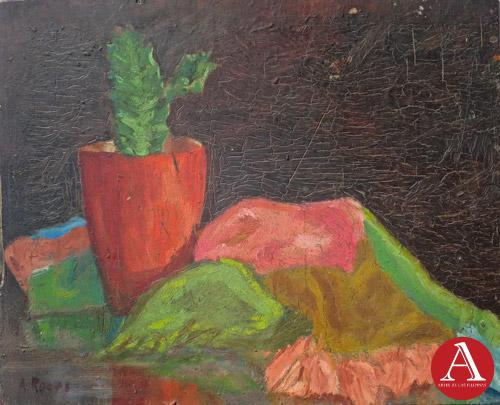

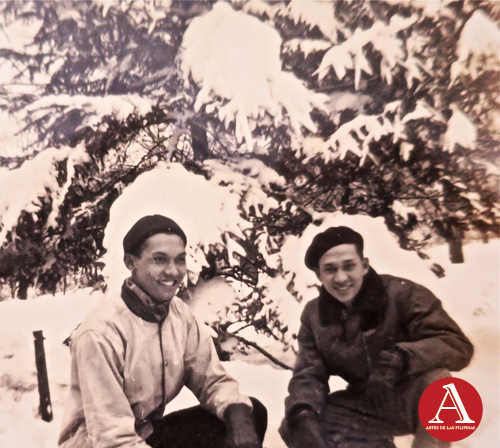
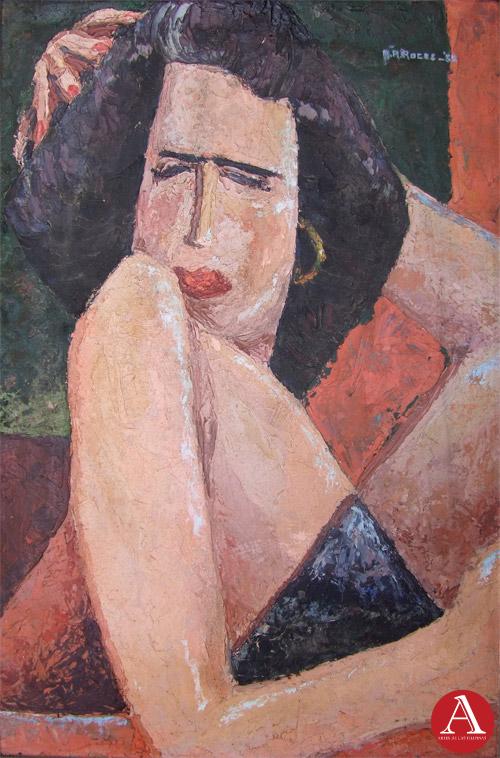
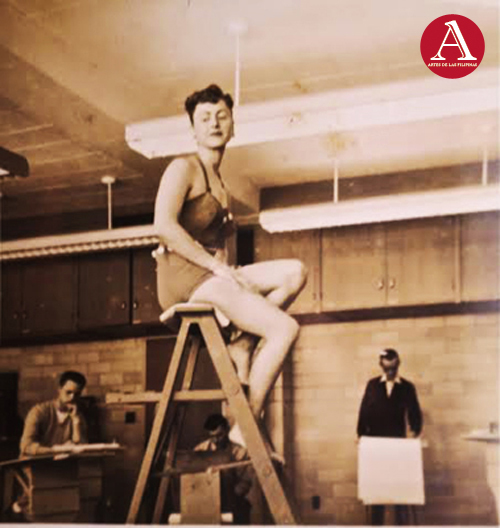
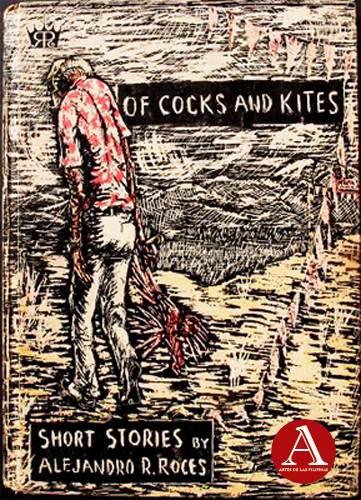


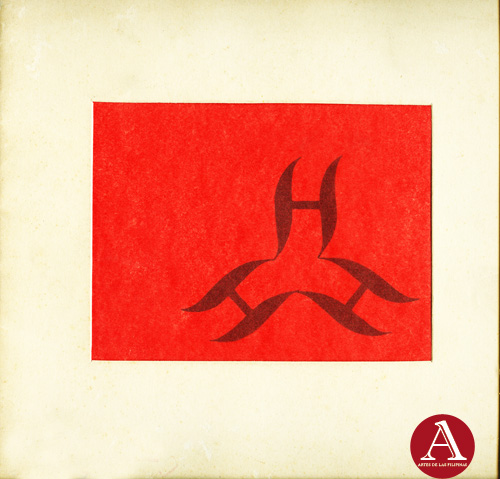
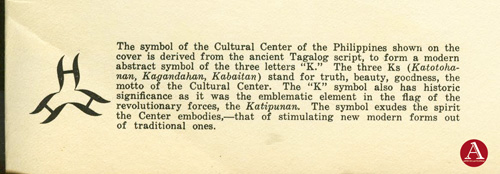
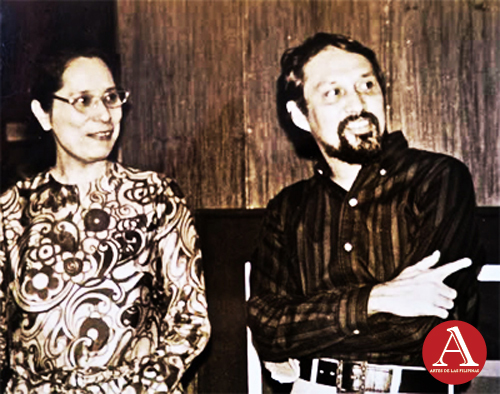

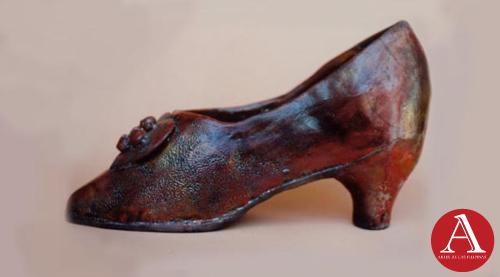
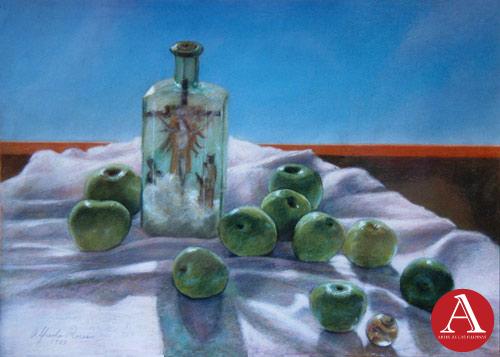

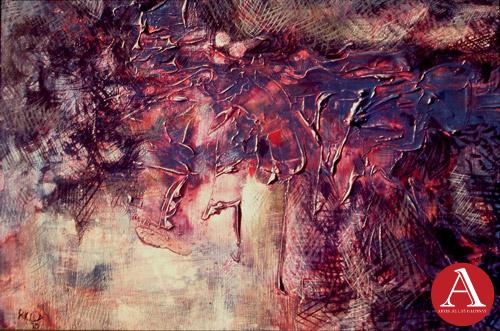
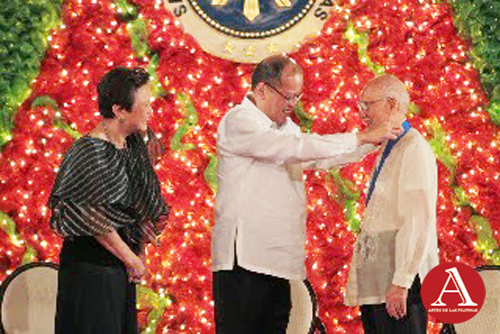

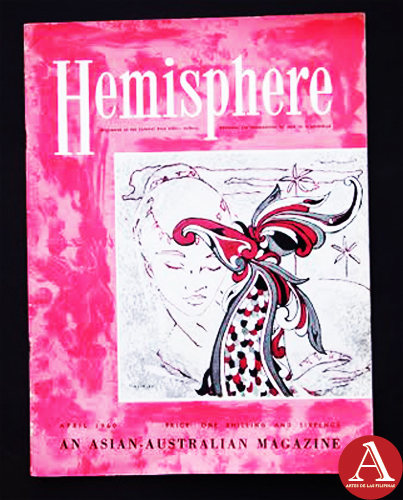

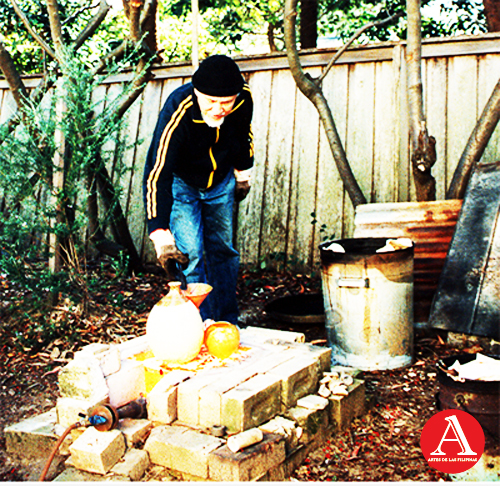
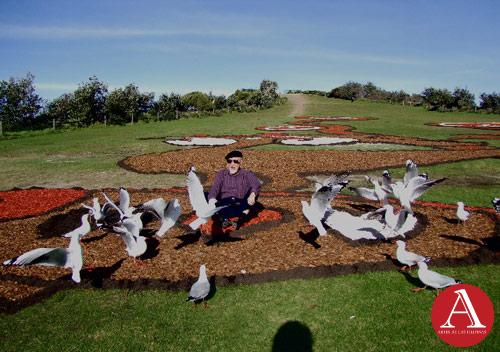
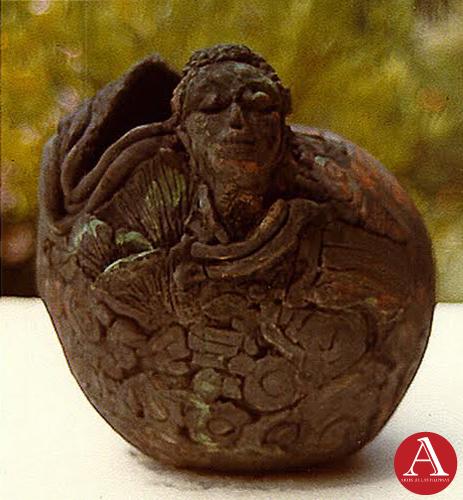

 Impending Rain, Sydney, Australia, oil (1994)
Impending Rain, Sydney, Australia, oil (1994)







 Family Photo in Sydney with his mother, Caridad Morente Pineda
Family Photo in Sydney with his mother, Caridad Morente Pineda










